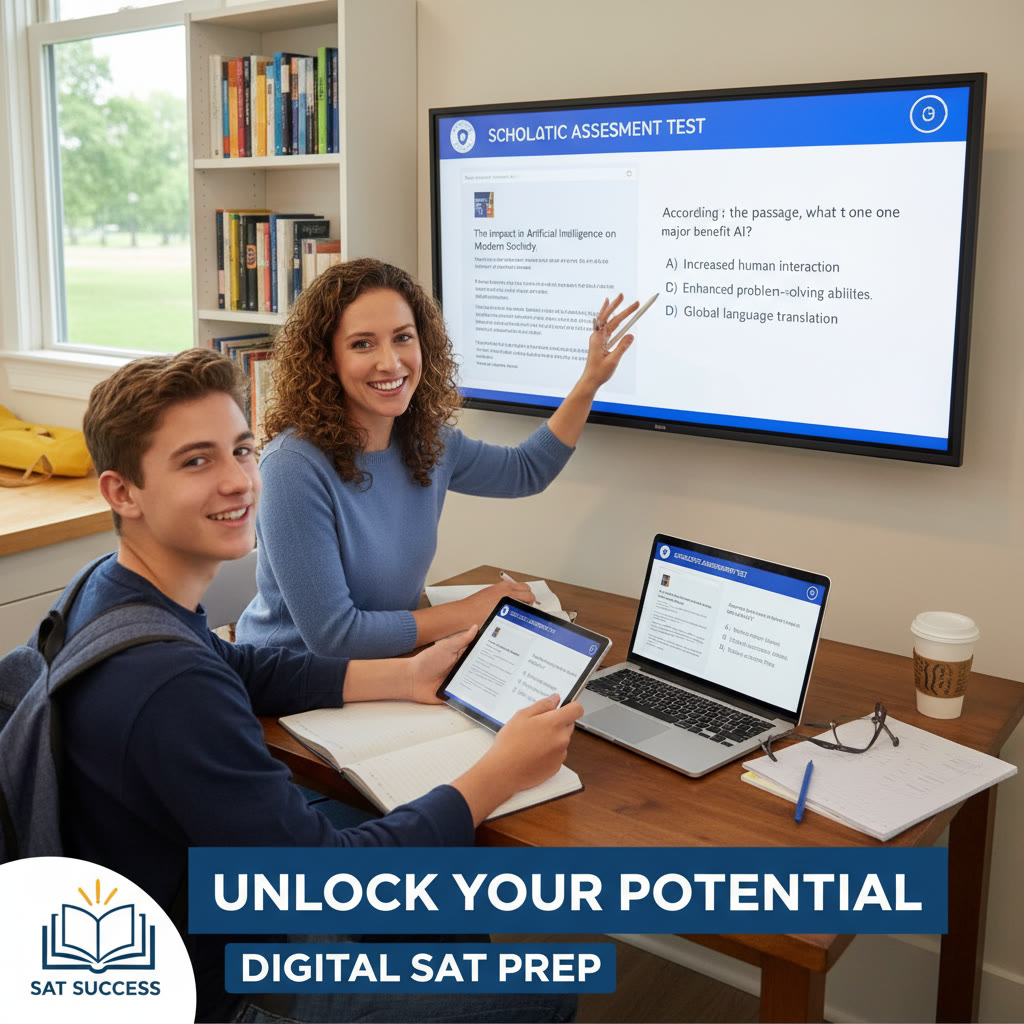Introduction: Why the SAT Still Matters for Rice University Applicants
When you’re dreaming about Rice University—its tight-knit residential culture, strong engineering and humanities programs, and famously collaborative campus—you also start thinking about the practical steps that lead there. One of those steps is the SAT. Even as many colleges update testing policies and the SAT has gone digital, Rice remains a school where strong standardized-test performance can bolster an application and help scholarship committees understand your academic readiness.
This guide is written for students and parents who want an honest, friendly, and practical look at SAT expectations for Rice: what scores Rice tends to see, what “test optional” or “recommended” can mean in practice, how to set target scores, and how to structure preparation without burning out. You’ll also find a sample study plan, a comparison table of score ranges, and real-world tips about applying. Along the way I’ll mention how targeted support—like Sparkl’s 1-on-1 guidance, tailored study plans, expert tutors, and AI-driven insights—can accelerate results for students who want a competitive edge.
What Rice University’s SAT Expectations Look Like Today
Rice is highly selective. For students who submit SAT scores, the typical admitted-range scores are very high, often clustered near the top end of the SAT scale. That high range reflects the academic profile Rice looks for: consistent high school performance, rigorous coursework, and standardized test evidence of readiness for demanding college work.
Put simply: if you want your application to be viewed as fully competitive in the context of test scores, you should aim for a score within—or above—the upper part of Rice’s reported range. But that is only part of the story. Rice reads applications holistically, considering essays, recommendations, grades, extracurricular impact, and special talents alongside test performance.

Numbers to keep in mind
While average and middle-50 ranges change slightly year to year, a realistic snapshot to aim for is this: admitted students who submit scores often show totals in the very high range—near the mid-1500s out of 1600. That means exceptional performance on both Evidence-Based Reading & Writing (EBRW) and Math. If you’re below that range, a strong application in every other domain can still matter—but higher scores reduce uncertainty for admissions readers and can improve scholarship opportunities.
Rice’s Test-Optional Nuance: What “Recommended” or “Optional” Means
Some years schools list SAT/ACT as required; others list them as recommended or optional. When a college is test-optional, candidates may choose not to submit scores. However, there are important strategic distinctions:
- If your score is within or above Rice’s typical admitted range, submit it—because it strengthens your application.
- If your score is well below Rice’s reported range, it may be wise to focus on other strengths (grades, coursework, essay, recommendations) and skip submitting that low score—unless you can improve it first.
- For scholarship consideration and specialized programs within Rice, strong SAT scores can sometimes improve your chances or unlock additional funding; check individual program guidance.
In short, “optional” does not mean “irrelevant.” It means make a strategic choice: submit a score if it helps, don’t if it hurts.
What a Competitive SAT Profile for Rice Looks Like
A competitive profile isn’t defined by a single number—admissions reviewers evaluate the whole package. That said, here’s how to think about the SAT component:
- Target total: Aim for the top quarter of Rice’s admitted range; the closer to 1600 the better.
- Balanced sectional performance: Strong EBRW and Math scores show academic range. Rice values both critical reading/writing and quantitative reasoning.
- Consistency with transcript: If your GPA and course rigor are brilliant, but your SAT is weaker, work to improve the score or show other academic strengths (AP/IB scores, subject tests, portfolio if applicable).
- Improvement over time: If you show a clear trajectory of improvement—rising PSAT to SAT scores, for example—that narrative can help contextualize an initial lower score.
Practical Benchmarks: A Quick Comparison Table
Below is a simple table to help families set practical goals. Treat these as strategic bands—aim for the green band if you want to be comfortably competitive; yellow means still possible but rely on strong other credentials; red means you should consider retaking or leaning heavily on other strengths.
| Band | Score Range (Total out of 1600) | How Admissions Might View It |
|---|---|---|
| Green (Highly Competitive) | 1520–1600 | Scores match or exceed typical admitted ranges; strengthens application and scholarship prospects. |
| Yellow (Competitive with Strong Context) | 1450–1510 | Solid scores; may require stand-out essays, coursework, or activities to stand out at Rice. |
| Red (Needs Improvement) | Below 1450 | Score alone is a weaker signal for Rice’s typical admitted pool; consider retesting or emphasizing other strengths. |
How to Set Your Personal SAT Target for Rice
Start with two honest data points: your practice test baseline and your high school GPA/course rigor. If your baseline is already in the green band, fine-tune with practice tests and error analysis. If it’s in yellow or red, build a realistic timeline for improvement—and plan to retake the test when you can show measurable progress.
Questions to guide target-setting:
- How many months do you have before application deadlines (Nov 1 for early rounds, Jan 4 for regular at many top schools)?
- Can you realistically increase your baseline by 30–100 points with focused prep?
- Do you have time to take multiple full-length digital SAT practice tests under realistic conditions?
Building a Study Plan: Smart, Sustainable, and Test-Effective
Effective SAT preparation balances content review, test strategy, and consistent practice under realistic conditions. Here’s a nine-week, sample plan for a student aiming to improve by 100–150 points. Adjust the timeline if you have more or less time.
9-Week Sample Plan (assuming baseline practice test already taken)
- Weeks 1–2: Diagnostic and Foundation
- Take a full official digital practice test (timed) to identify weaknesses.
- Focus on content gaps (grammar rules, algebra/pre-cal review, reading strategies).
- Practice using College Board digital practice tools and Khan Academy practice aligned to missed items.
- Weeks 3–5: Strategy and Targeted Practice
- Work on question types that cost points (sentence correction strategies, function and graph interpretation, evidence-based reading).
- Timed section practice and pacing drills.
- Weekly full-section practice and review of every incorrect question for patterns.
- Weeks 6–7: Simulated Testing and Fine-Tuning
- Take two full practice tests under realistic conditions; review thoroughly.
- Focus on reducing careless errors and improving time management.
- Weeks 8–9: Final Polishing
- Light content review; strategy refreshers; two final practice tests spaced out.
- Sleep, nutrition, and test-day logistics planning.
For many students, pairing this plan with personalized tutoring that targets exactly what each student needs—say, 1-on-1 sessions to attack weak question types—saves time and increases score gains. Sparkl’s approach, with tailored study plans and AI-driven insights to highlight the highest-impact areas, is one way to get that efficient, customized support.
Digital SAT Specifics: What to Practice Now
The SAT is now delivered digitally, which changes some test-day mechanics and practice habits:
- Practice on a screen: take official digital practice tests so you’re comfortable with the interface, navigation, and on-screen tools.
- Adaptive sections: the digital SAT uses adaptive mechanics—your second module is influenced by performance on the first—so early accuracy matters.
- Pacing and marking: learn the platform features that let you flag questions, skip and return, and use the on-screen calculator in the appropriate section.
Digital practice is not optional anymore—students who only practice on printed tests can be surprised by the different rhythm and fatigue that screen-based sections introduce.

Application Timing: When to Take (and Retake) the SAT for Rice
Timing matters. For students applying in the regular cycle, aim to have a final, polished score by early December at the latest. For early decision/early action applicants, an October or November test (with scores available in time for a November 1 early deadline) is common. If you intend to retake the test, schedule earlier practice tests so you leave room for another attempt before deadlines.
Practical timeline rules:
- Take an initial practice test at least 4–6 months before your ideal application deadline.
- If you’re not satisfied, schedule a retake at least 6–8 weeks after focused practice and targeted tutoring.
- Reserve your final submission for a score that shows real improvement; don’t rush to submit a score if you can materially raise it with reasonable effort.
Making the Decision: Submit or Don’t Submit Scores?
Here’s a checklist to help decide:
- If your score is in the green band: submit.
- If your score is in the yellow band: submit only if other parts of your application are strong and the score supports your narrative; otherwise consider retesting.
- If your score is in the red band: retest or focus application on strengths (essays, recommendations, portfolio, subject-specific accomplishments).
Also consider scholarship and program-specific requirements; some departments may weigh scores more heavily, and certain scholarships may request test scores even when general admission is test-optional.
How Rice Looks Beyond the SAT: Holistic Tips That Matter
Rice reads applications holistically. A student with an SAT slightly below Rice’s typical range can still be admitted if other pieces are exceptional. Consider these areas:
- Course rigor and grades: High-level coursework (AP/IB, honors) with strong grades signals readiness for Rice’s curriculum.
- Essays: Demonstrate voice, intellectual curiosity, and fit—Rice values students who contribute to a collaborative community.
- Recommendations: Strong, specific recommendations that speak to intellectual character and classroom contributions can tip the scales.
- Extracurricular impact: Depth and leadership in one or two meaningful areas often matter more than superficial breadth.
When the SAT is modest, amplify these other areas. But if the SAT can be improved with focused work, do so—because a better score reduces the burden of needing perfection elsewhere.
Example Student Scenarios and What to Do
Concrete examples help clarify choices. Here are three hypothetical applicants and practical next steps:
- Emma, baseline 1540, GPA 3.95, strong essays: Submit the SAT. Use remaining months to refine essays and secure one stellar recommendation. Consider applying Early Decision if Rice is first choice.
- Jay, baseline 1480, GPA 4.0, research experience in engineering: Retake the SAT if you can improve by 40–80 points with targeted prep; if not, submit with strong contextual materials (research, teacher letters) that emphasize fit for Rice engineering.
- Sophia, baseline 1400, GPA 3.9, national arts award: If the arts strength is exceptional and Rice has programs that match, prioritize portfolio/arts supplements and decide on SAT submission based on retest prospects.
How Parents Can Support Without Micromanaging
Parents play a critical role in motivation, logistics, and emotional support. Helpful approaches include:
- Providing structure—help with scheduling practice tests, test day logistics, and quiet study time.
- Encouraging balanced routines—sleep, exercise, and break times matter for concentration and retention.
- Helping find targeted, high-quality help—if your student needs guided coaching, look for tutors who create personalized study plans, track progress, and focus on high-impact gains. Sparkl’s 1-on-1 approach is an example of targeted help that blends human tutoring with data-driven insights to focus study time where it matters most.
- Keeping perspective—remind your student that Rice looks for more than test scores and that resilience and authenticity matter in the long run.
Test Day: Checklist and Calm Strategies
Test day is where preparation meets performance. Small details add up:
- Sleep well the night before; avoid last-minute cramming.
- Pack a kit: photo ID, approved device if required for digital SAT, charger, snacks for before/after, water, comfortable clothing, and backup batteries if allowed.
- Arrive early; know test center rules or the remote test protocols so you’re not surprised.
- Use the first five minutes to breathe and review your pacing plan—don’t dive into panic mode if a question seems strange; mark it, move on, and return if time allows.
When to Consider Professional Tutoring (and What It Should Do)
Tutoring is an investment, and it pays off when:
- It’s personalized—tutors should identify individual problem types and craft a tailored plan rather than delivering generic lessons.
- It’s results-focused—look for tracking of practice-test score improvement and actionable feedback on mistakes.
- It integrates with resources—good tutors use official College Board digital practice and can assign targeted practice between sessions.
Effective tutoring might be a few months of focused 1-on-1 sessions, especially for students aiming for significant score jumps. Sparkl’s model—blending expert tutors, tailored study plans, and AI-driven insights—can help students zero in on the question types that yield the biggest score gains while fitting prep into a busy senior-year schedule.
Final Thoughts: Balance Ambition with Strategy
Rice University is selective, and while an excellent SAT score can strengthen an application, it’s not the only path to success. The healthiest approach is strategic: set a realistic target, practice smart (on the digital format), use personalized support where it accelerates improvement, and polish the other pieces of your application so that they tell a cohesive story.
Remember: admissions officers read applications as narratives about who you are and what you’ll bring to campus. Let your SAT score be a strong, honest chapter of that story—not the only one.
Quick Reference: Action Plan for Students Applying to Rice
- Take a full digital practice SAT now to set a baseline.
- Choose a study path: self-study if you’re within 50 points of target; tutoring if you need larger gains or efficient, guided improvement.
- Plan test dates so you have at least one polished score before early deadlines and a backup before regular decisions.
- Strengthen essays, recommendations, and activity descriptions in parallel to SAT prep.
- Decide whether to submit scores based on your final, polished test performance and the strengths of your overall application.
Need a Personalized Plan?
If this feels overwhelming, start small: schedule a diagnostic practice test, then map the gap between your baseline and a Rice-competitive target. Personalized tutoring—offering 1-on-1 guidance, a tailored study plan, and AI-driven analytics to prioritize weak areas—can turn months of aimless prep into focused progress. For families considering that route, look for programs that report progress clearly, adapt plans to the student, and keep the student’s well-being front and center.
Final encouragement
Applying to Rice is a big step, and excellence in any one area will not magically guarantee admission—nor does a single lower-than-expected score close the door. Prepare thoroughly, use targeted help where it accelerates growth, and tell your authentic story across your application. With steady effort and smart choices, you’ll maximize your chances and walk into your application season confident that you did your best.
Good luck—and remember: the SAT is a chance to show what you know, but your curiosity, character, and contributions matter just as much in the eyes of Rice.













No Comments
Leave a comment Cancel